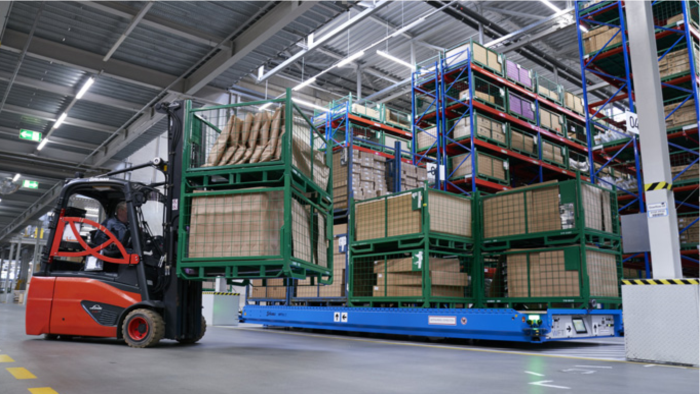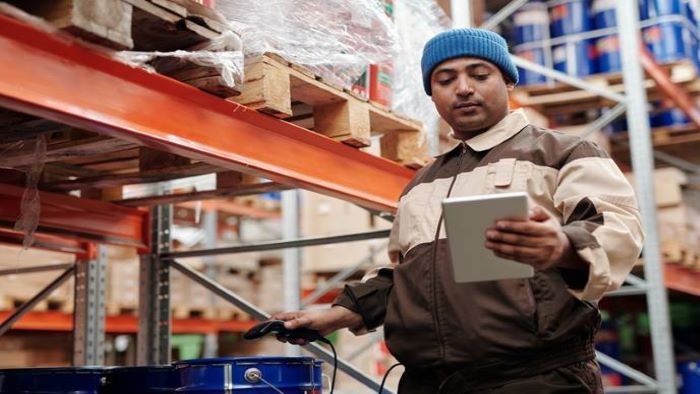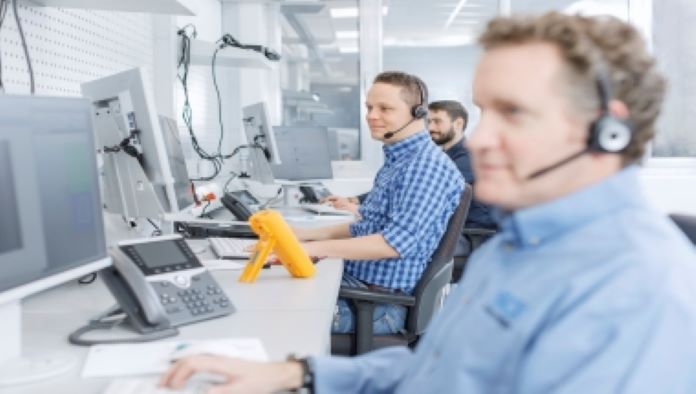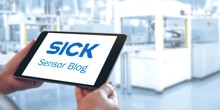Expansion instead of optimisation
Expansion is one way to grow – securing more warehouse space or adding to a fleet of vehicles. But the scope for expansion has limits and adds to business costs (increased spend on warehouse lease or increased vehicle maintenance costs, for example). It’s favourable to optimise an existing business, securing greater efficiency using current infrastructure. This may be through smarter conveyor and warehouse design, for example, which allow for handling of greater volumes without the need for larger warehouses.
Another good reason for warehouse owners and manager to consider using SICK sensors in their operations is that smart sensors enable automation. It’s about putting accurately volumised and measured boxes not only on the correct shelf but also in a precise spot on that shelf, that picking and packing are more efficient (and productivity is maximised). Sensors eliminate human error, too.
Sensor options include:
RFID tags on boxes for traceability within the warehouse, to ensure they’ve been moved or deposited in the correct location.
Sensors (e.g. Pick-to-Light from SICK) control access and stock removal, indicating where product or boxes should be picked from during the packing process. This prevents mix-ups or missing items, while optimising traffic through the warehouse.
Something else to consider when reviewing optimisation solutions is reverse logistics. Ensure your conveyor systems and warehouse can run in reverse, too, to accommodate this if necessary (e.g. if your warehouse processes product returns).
Neglecting safety
Let’s address the misconceptions surrounding safety: that safety measures don’t deliver ROI, and that they hamper productivity.
Safety measures don’t demonstrate ROI in the short term. But they do prevent injury to personnel and the losses resulting from damage to product or property. Therefore, over the medium- to long-term, safety measures add value to the business by negating the losses/damage. Additionally, a safer working environment is a key indicator of employee satisfaction.
Safety solutions also enhance productivity. Consider that a breach in safety protocols may result in a processing halt, negatively impacting productivity.
Key to the adoption of safety solutions is effective change management, which explains to personnel what the safety technology is, its purpose, correct utilisation and its benefits.
Safety sensor options include:
Safety sensors on forklifts prevent collisions in the warehouse. They also ensure the correct positioning of the vehicle for release or pick-up of product – especially important when the product is on a pallet 8 or 10 levels high, for example, and the risk of pallets falling over is high. The SICK Backup Assistance System is the ideal solution in this regard.
Sensors that measure deceleration, acceleration and angle (e.g. SICK’s Inertial Sensors) ensure a forklift or other mobile warehouse asset is moving products optimally and adhering to safe routes and speed limits.
2 trends to watch:
Data and analytics should be easily accessible, without compromise to security
As businesses increase their reliance on automation, access to data and data analytics become more significant too. Customers want to be able to view data from mobile devices, in real time, and in a user-friendly format. However, it is important that data security and integrity remain uncompromised.
Automated vehicles and dark warehouses
A big trend in the European and US markets is the AGV or AGC – automated guided vehicles or cars – and dark warehousing (i.e. where human input is limited to a minimum and most of the work is carried out by robots and other automated equipment). These systems will replace long pieces of conveyor that move boxes across a warehouse and divert them into chutes. They independently move boxes from receiving through to dispatch (even over long distances) without error or collision. This optimises the material flow through the warehouse, enhancing efficiency.
In a cost-sensitive South African market, some of these solutions may appear to be grudge purchases. But when done right, the installation of smart sensors and solutions is an investment in efficiency, productivity and improved operations. This is most easily achieved when you partner with a specialist who provides turnkey service, including support and training.
It’s the early adopters of technology who realise the benefits of sensor-enabled automation, achieving sustained enhanced throughput and effective cost management.




